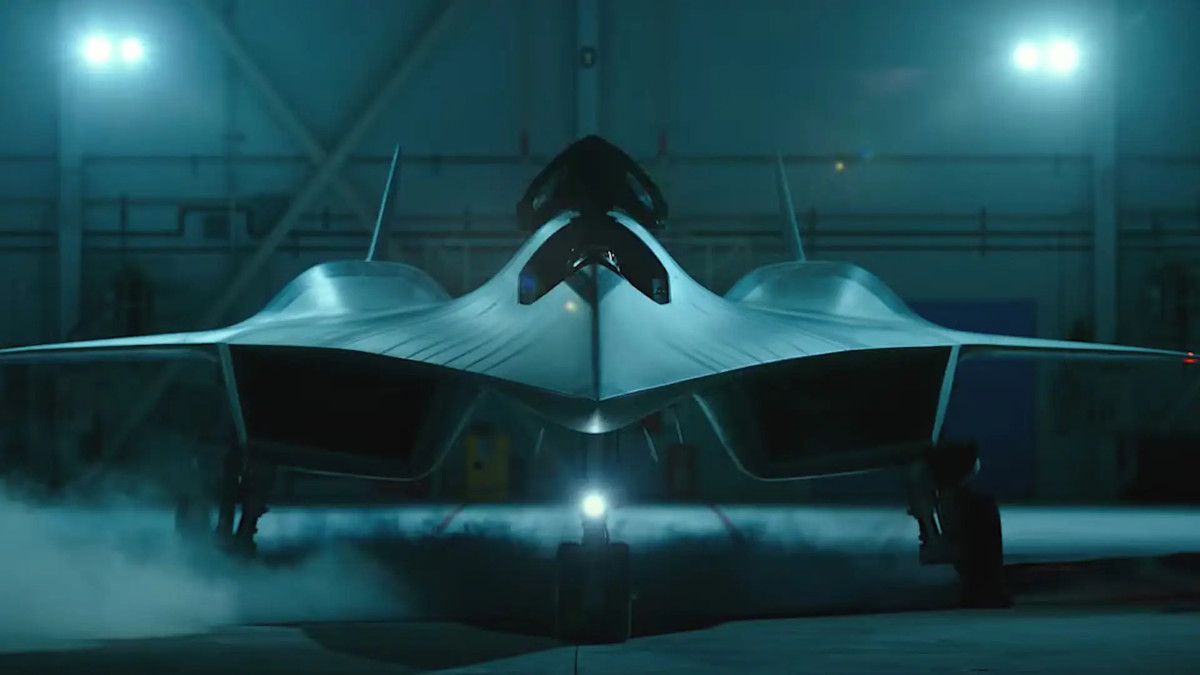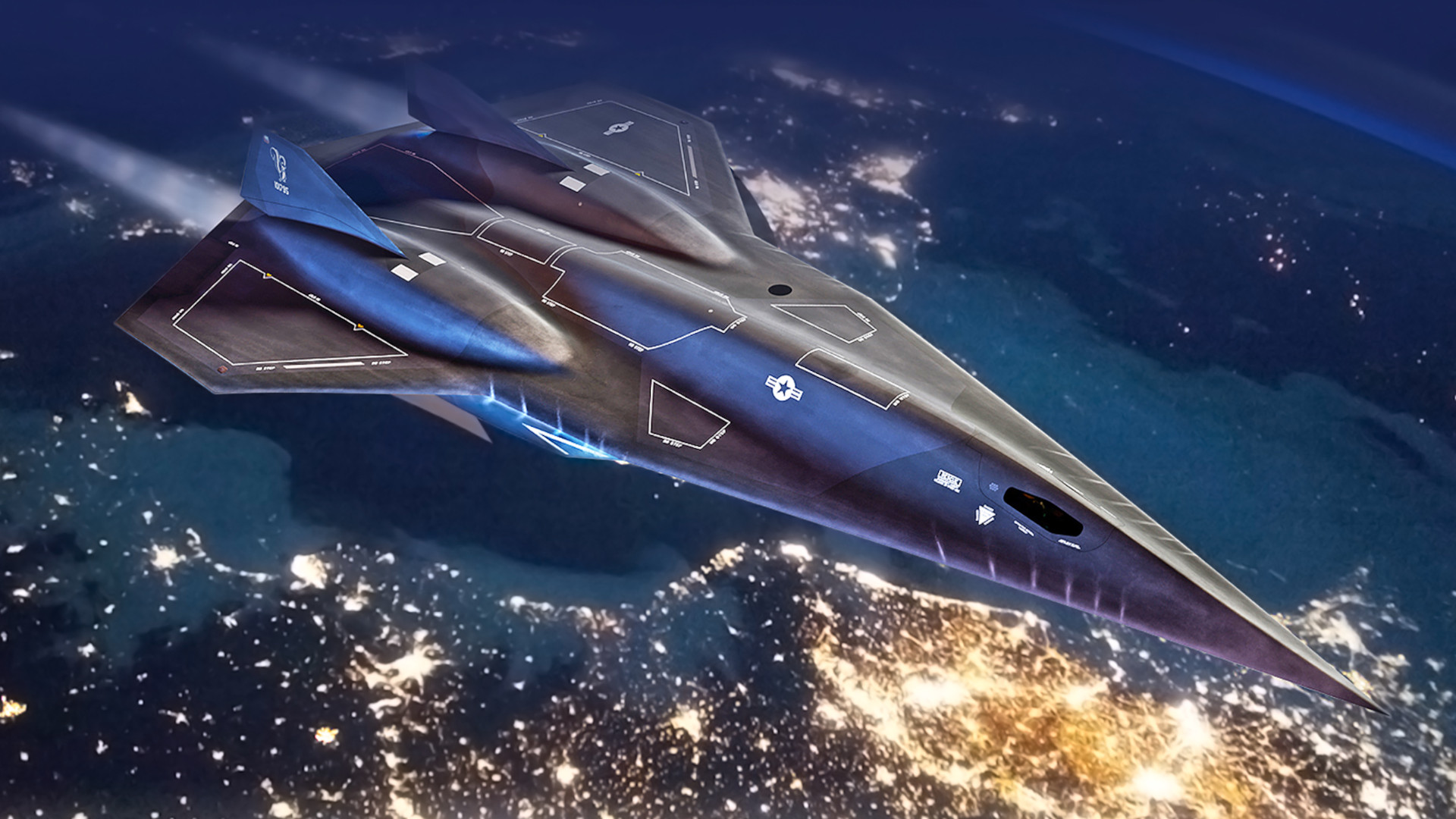Nearly a week after the highly-anticipated Top Gun: Maverick hit theaters to rave reviews, Lockheed Martin has created a webpage dedicated to the story behind the creation of the film’s Darkstar hypersonic aircraft. The company had previously disclosed that its legendary Skunk Works advanced projects division had been directly involved in creating this fictitious design, but had declined to provide more specific details about its relation to the production.

“Lockheed Martin Skunk Works thrives on tackling seemingly impossible work, developing technologies for tomorrow’s challenges before the need is even identified,” the website says. “When the Top Gun: Maverick team was looking to push the envelope and stand true to Maverick’s Need for Speed, Skunk Works was their first call.”
The webpage includes additional artwork showing off the design, as well as three brief video interviews with individuals who helped bring the Darkstar to the big screen. All of these employees are identified only by their first names.

“Most of the stuff I work on, I can’t talk about,” Jim, described as an “artist… with some technical boundaries applied” who helps “conceptualize the future” at Skunk Works, says in his video featurette. “The first thing you draw may not be the right answer. The 10th thing you’ve drawn may not be the right answer. And so you have to be willing to start over.”

“What excites me around here is the ability to see the future,” Jason, a radio frequency engineer at Skunk Works says in his video interview, where he speaks alongside Lucio, a laboratory mechanic.
“When we aren’t changing cinematic history by building Darkstar, we’re changing the future of aviation by building the next generation aircraft,” Lucio adds in the clip, which includes footage from Skunk Works’ Helendale Radar Signature Test Range.

In my role, my responsibility is to design and fabricate different types of full-scale pole models,” mechanical engineer Becky explains in her video interview, referring to the kinds of models that Skunk Works creates to mount on poles at facilities like Helendale to test a design’s radar signature. “On Darkstar, I was the lead mechanical design engineer. That was my first model that I ever did and it was so rad.”

The captions to the features also confirm that Skunk Works built a physical mockup of some kind that included “a forebody model with a functional cockpit for an iconic actor [Tom Cruise]” and that required attention from Becky during the production to keep it “structurally sound and worthy of its pilot.” The company describes what was built as “a functional piece of art.”
We have reached out to Lockheed Martin for more information about the mockup.

When it comes to the Darkstar design itself, the artwork on Lockheed Martin’s new webpage more or less shows what we’ve already seen, This includes the cockpit layout with zero forward visibility, something also found on Skunk Works’ real X-59 Quiet Supersonic Technology aircraft, or QueSST, which it is building for NASA.
Interestingly, the art on the site does depict Darkstar as having a port on the top of the fuselage that is typically associated with a celestial navigation system. Skunk Works’ iconic SR-71 Blackbird supersonic spy plane featured an automated celestial navigation system, nicknamed “R2D2” after the famous droid from the Star Wars universe. Other strategic U.S. military aircraft have similar Cold War-era systems, new ones of which could be key to providing future navigation capabilities that are immune to jamming and spoofing, as you can read more about here.

Otherwise, it has long been noted that the fictitious Darkstar aircraft shares many outward visual similarities with an unmanned hypersonic design that the company publicly pitched to the U.S. military in the past, which was dubbed the SR-72. That nomenclature was a reference to the design being a spiritual successor to the SR-71. Darkstar is also a name associated with Skunk Works, having been previously applied to the RQ-3 low-observable reconnaissance drone.

“With the Skunk Works expertise in developing the fastest known aircraft combined with a passion and energy for defining the future of aerospace, Darkstar’s capabilities could be more than mere fiction. They could be reality… ,” the Darkstar webpage says. “Darkstar may not be real, but its capabilities are.”
Back on April 29, John Neilson, Lockheed Martin’s Director of Communications for Europe, the Middle East, and Africa, had also made a post on Twitter that implied that Darkstar could offer a “sneaky peak at what might be the Lockheed Martin SR-72.”
This all comes amid a surge in U.S. military interest in all things hypersonic in recent years, with Lockheed Martin and Skunk Works having scooped up a number of significant contracts in the process. Work on hypersonic systems has been a key factor in a major expansion of the overall size of Skunk in terms of facilities and personnel over the same general timeframe.
Lockheed Martin’s touting of the Darkstar design and the return of public discussion about the SR-72 also come as details have trickled out about a secretive U.S. Air Force program called Mayhem, which is focused on the development of hypersonic aircraft demonstrators capable of performing intelligence, surveillance, and reconnaissance (ISR) and strike missions. These are exactly the mission sets that the company had previously said that the proposed SR-72 would be ideally suited for. In 2016, Lockheed Martin had also publicly discussed the potential of building a roughly F-22 Raptor-sized demonstrator aircraft, which would cost less than $1 billion to produce, to help prove out this hypersonic design.
Regardless of just how closely related Darkstar may or may not be to any actual Skunk Works projects, Lockheed Martin is clearly hoping to recruit off of its involvement in the film, just like the U.S. Navy and the U.S. Air Force are. Darkstar gave the company an important role in the production, which was otherwise dominated by Boeing’s F/A-18E/F Super Hornet. Lockheed Martin’s F-35C Joint Strike Fighter also makes limited appearances in the movie. One section of the website includes a link to where you can apply online for various jobs across the entire company.

All told, while Darkstar, specifically, may not be real, it’s hard not to feel like there is more left to learn about its relationships to actual Skunk Works developments.
Contact the author: joe@thedrive.com
